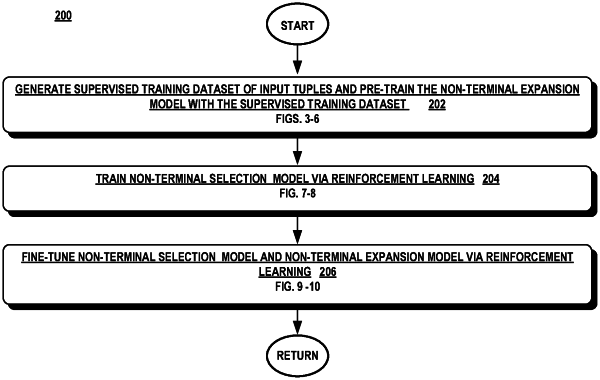| CPC G06F 8/33 (2013.01) [G06F 8/36 (2013.01); G06N 3/045 (2023.01); G06N 3/08 (2013.01)] | 20 Claims |

|
1. A system comprising:
a processor and a memory;
wherein the memory includes executable instructions that when executed by the processor perform actions that:
access a first deep learning model configured to predict whether a non-terminal symbol exists to be expanded given a partial-code state that represents a partially-formed code snippet;
access a second deep learning model configured to predict an expansion of a non-terminal symbol predicted by the first deep learning model, wherein the expansion replaces the predicted non-terminal symbol in accordance with a production rule of a grammar of a programming language of the partially-formed source code snippet;
obtain the partially-formed source code snippet; and
execute the first deep learning model and the second deep learning model to generate a code sketch to complete the partially-formed source code snippet, wherein the code sketch includes a source code snippet with at least one hole.
|